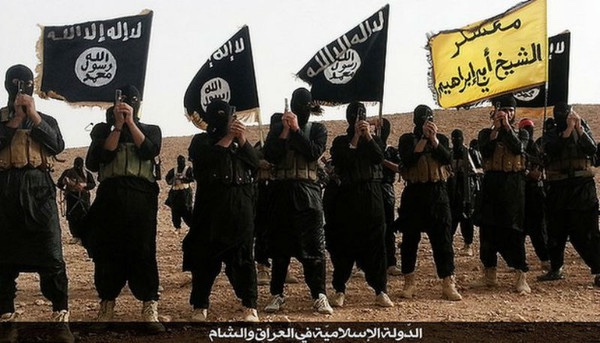Studying the 30 Years War Gives Me Hope about Our Religious Wars

ISIL fighters - By Islamic State (IS)
The daily headlines from Syria, and more generally the Middle East and Northern Africa, are ominous. Most observers have been dismissive of the recent ceasefire agreement after five years of extraordinarily destructive war in Syria, while concurrent wars and civil strife in Iraq, Yemen, Libya and Nigeria appear to have no end in sight. So is this to be the new normal in the 21st century?
One important feature that all of these conflicts have in common is that the principal combatants tend to identify both their friends and their enemies in religious terms – in terms of religious beliefs, behaviors or affiliations. Indeed, some analysts have suggested that we have entered into a new era of religious wars or even more specifically a new Thirty Years War. References to Europe’s bloody wars of religion in the 16th and 17th centuries no doubt underscore the danger of our current situation, but the history of Europe’s religious wars might just a well give us reason to imagine and work for a more peaceful future. Let me explain.
There were six major clusters of religious war in Europe between the 1529 and the 1651, first in Switzerland and Germany, next in France and the Low Countries, and finally in Germany, again, and the composite British monarchies in England, Scotland, and Ireland. In all of these conflicts, the principal combatants identified their enemies as well as their friends in terms of religious beliefs, behaviors or affiliations, which is why I consider them religious wars; in addition, recent research has shown that all of them resulted, in the long term, in the institutionalization of durable of forms of religious coexistence. How did that happen and what did that look like?
Some of Europe’s religious wars ended with military stalemates and negotiated religious settlements, the most successful of which are justifiably famous: the Religious Peace of Augsburg (1555), the Edict of Nantes (1598), and the Peace of Westphalia (1648). What these had in common was simple: mutual recognition of otherwise intolerant religious groups; security guarantees for all parties to the agreement; and legal processes or mediation to resolve future disagreements. These agreements are famous precisely because they stopped the fighting and thus made religious peace possible. In contrast with the more numerous, but similar negotiated settlements that quickly failed, the successful agreements enjoyed the grudging consent of those who had commanded the armies or controlled the resources that supported the warfare.
Those conflicts that ended in convincing military victories – like the civil wars in England, Scotland and Ireland – or even partial victories – like the Eighty Years War, which separated the Dutch Republic from the Southern Netherlands – also eventually yielded to durable forms of religious peace once the fighting stopped. In these cases, the grudging consent did not entail the acceptance of explicit blueprints for a pluralistic future, but rather a general acceptance of the domination of one religious group or organization over all others.
So what did the religious peace actually look like in early modern Europe? The simple answer is that it was complex and messy for at least two reasons. On one hand, though successful agreements entailed blueprints for a pluralistic or inclusive future that were acceptable to the elites who were their signatories, the agreements did not bring religious diversity or pluralistic facts on the ground into being. On the contrary, the elite signatories were grudgingly validating patterns of religious diversity that had emerged over time, outside their control and often against their intentions. On the other hand, those who claimed military victory and institutionalized religious domination grudgingly accepted religious differences only if they were discreetly hidden from view.
As a consequence historians have had to move beyond their traditional documentary sources to describe and account for the contours of Europe’s complex and messy religious peace. In general, we can say that religious diversity was the rule, not the exception in early modern Europe following the religious wars, and that it took a limited range of forms. In my work, I call the various forms parity, integration, privilege, repression, and ad-hoc tolerance, depending on whether official policies were inclusive or exclusive and whether religious differences were visible and thus salient in public life or not.
The complexity and messiness in European historical experience comes from the fact that the various forms of religious coexistence were thoroughly intermingled within specific polities and also subject to change over time as a consequence of on-going political processes. Yet the essence of religious peace in Europe was simple: in the wake of, or in spite of, often bloody religious warfare, mutually intolerant and formerly bellicose Europeans learned to accommodate their obvious and enduring religious differences. The resultant peace wasn’t pretty, and for many it was profoundly inequitable. But even a messy religious peace was clearly preferable to the alternative: the coordinated destruction of war.
While no one can predict how or when the current conflicts will end, there is little reason to believe that we are simply stuck where we are currently. On the contrary, the evidence from European history suggests not only that peace is possible, even in the most desperate situations, but also that some form of peaceful religious coexistence among the former combatants will likely be the eventual outcome. Imagine that!